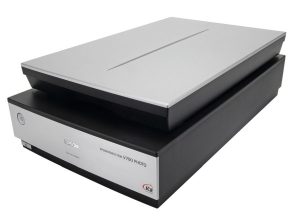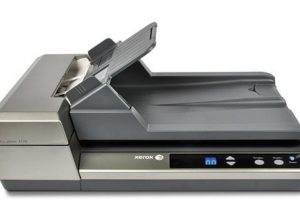Contents
Essential Scanner Maintenance Practices
Regular maintenance of your image scanner ensures optimal performance, superior scan quality, and extends the device’s lifespan. This comprehensive guide covers essential cleaning and maintenance procedures for different scanner types.
Daily Maintenance Routines
Keep the scanner’s glass plate pristine by wiping it with a lint-free microfiber cloth before each scanning session. Remove any visible dust particles, fingerprints, or debris that could compromise image quality. For flatbed scanners, pay special attention to the corners where dust typically accumulates.
Deep Cleaning Procedures
Perform monthly deep cleaning using appropriate cleaning solutions specifically designed for optical equipment. Apply the solution to a microfiber cloth rather than directly on the scanner surface. For automated document feeders (ADF), clean the rollers with isopropyl alcohol to prevent paper feeding issues and maintain consistent document transport.
| Component | Cleaning Frequency | Recommended Method |
|---|---|---|
| Glass Plate | Daily | Microfiber cloth (dry) |
| ADF Rollers | Weekly | Isopropyl alcohol solution |
| Scanner Housing | Monthly | Slightly damp cloth |
Environmental Considerations
Position your scanner in a clean, dust-free environment with stable temperature and humidity levels. Use a protective cover when the device isn’t in use. Maintain optimal operating conditions between 10-35°C (50-95°F) with relative humidity between 15-85% to prevent internal condensation and component damage.
Calibration Requirements
Perform scanner calibration monthly or after deep cleaning to maintain color accuracy and image quality. Most modern scanners include built-in calibration tools or provide calibration sheets. Follow manufacturer-specific guidelines for optimal results, as calibration procedures vary between models and brands.
Professional Servicing Schedule
Schedule professional maintenance annually for high-volume scanners or when performance issues arise. Qualified technicians can address mechanical problems, replace worn components, and perform specialized cleaning of internal optics that aren’t accessible to end-users.
Daily Scanner Care
Before each scanning session, inspect the scanner glass for visible dust, fingerprints, or debris. Use a soft, lint-free cloth to gently wipe the scanning surface. For stubborn marks, slightly dampen the cloth with distilled water, ensuring no liquid seeps into the scanner’s components.
Deep Cleaning Procedures
Monthly deep cleaning maintains optimal scanner performance. Power down and unplug the scanner before beginning. Use specialized scanner cleaning solutions or isopropyl alcohol (90% or higher) with lint-free wipes. Clean the following components:
| Component | Cleaning Method | Frequency |
|---|---|---|
| Scanner Glass | Specialized cleaning solution with microfiber cloth | Weekly |
| ADF Rollers | Isopropyl alcohol with lint-free cloth | Monthly |
| Paper Guides | Dry microfiber cloth | Weekly |
| External Surface | Slightly damp cloth | Monthly |
Automatic Document Feeder Maintenance
ADF systems require special attention to prevent paper jams and ensure smooth operation. Clean the rollers using specialized cleaning sheets or a cloth dampened with isopropyl alcohol. Rotate the rollers manually during cleaning to ensure complete coverage. Check for worn-out rollers and replace them according to manufacturer specifications.
Environmental Considerations
Position your scanner in a clean, dust-free environment away from direct sunlight and heat sources. Maintain room temperature between 50-90°F (10-32°C) with relative humidity between 15-85%. Use a dust cover when the scanner is not in use to prevent particle accumulation.
Calibration Procedures
Regular calibration ensures accurate color reproduction and image quality. Most scanners include calibration software and a calibration sheet. Perform calibration monthly or when you notice color inconsistencies. Follow these steps:
- Clean the scanner glass thoroughly
- Launch the calibration software
- Place the calibration sheet as directed
- Follow the software prompts to complete the process
Preventive Maintenance Schedule
Implement a routine maintenance schedule based on usage frequency. For high-volume scanning operations, increase cleaning frequency accordingly. Document all maintenance activities and track scanner performance to identify potential issues early.
Troubleshooting Common Issues
Address common problems promptly to prevent scanner damage:
- Streaks in scanned images: Clean scanner glass and check for scratches
- Paper jams: Clean ADF rollers and check paper guides
- Uneven scanning: Verify scanner glass is clean and properly seated
- Poor image quality: Perform calibration and check scanning settings
Storage Guidelines
When storing the scanner for extended periods, follow these guidelines:
- Clean all components thoroughly
- Place dust covers on scanning surfaces
- Store in a climate-controlled environment
- Position the scanner flat to prevent mechanical stress
- Secure any loose cables or components
Following these maintenance practices ensures reliable scanner operation and optimal image quality. Regular care prevents costly repairs and extends the operational life of your scanning equipment.





![How DPI Affects Image Quality: Understanding Scanner Resolution [Complete Guide]](https://yoopst.com/wp-content/uploads/2025/07/dpi-300x220.png)
